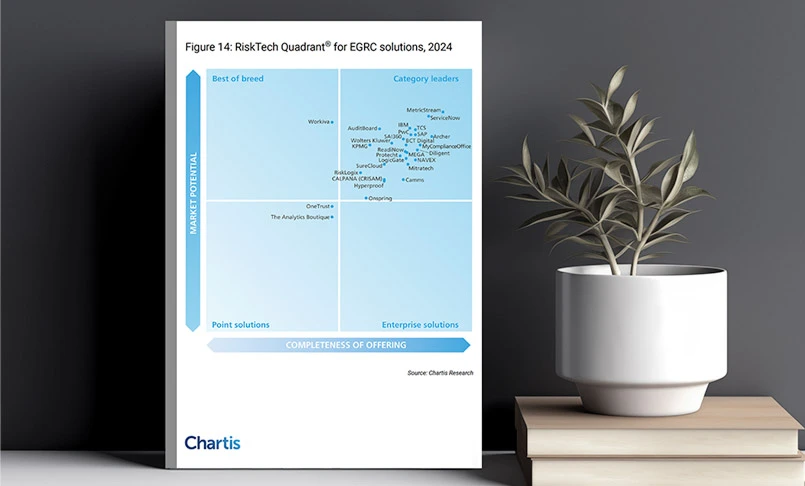Introduction
In today's fast-paced and unpredictable business environment, understanding vulnerabilities and preparing for disruptions are critical. Business impact analysis (BIA) is a cornerstone of business continuity planning, enabling organizations to identify and prioritize the functions that are essential to their survival. This article delves into the concept of BIA, its purpose, its importance, and how it differentiates from other related processes.
Key Takeaways
- Business impact analysis (BIA) identifies critical operations and assesses the potential impact of disruptions.
- BIA helps businesses prioritize resources and develop effective continuity plans.
- It differs from risk assessment and continuity planning, but all three work together to ensure organizational resilience.
- Conducting a thorough BIA is essential to mitigate financial loss, protect reputation, and ensure legal and regulatory compliance.
What is Business Impact Analysis (BIA)?
Business impact analysis (BIA) is a systematic process to evaluate the effects of a disruption on business operations. It helps organizations identify critical functions, assess the potential impact of downtime, and prioritize recovery efforts. The analysis considers factors such as financial implications, operational dependencies, regulatory requirements, and reputational risks.
What is the Purpose of Business Impact Analysis (BIA)?
The primary purpose of BIA is to prepare businesses for potential disruptions by ascertaining which functions are crucial to the longevity of the organization, what risks those functions can be sensitive to, how resources can be utilized best to ensure smooth functioning in the case of unforseen circumstances , and how to plan for streamlined operations in the future.
Some of the key areas that BIA addresses are :
- Identifying Critical Operations: Determining which functions are essential for the organization’s survival.
- Assessing Potential Impacts: Understanding financial, operational, and reputational consequences of disruptions.
- Prioritizing Recovery Efforts: Allocating resources to ensure quick recovery of critical functions.
- Supporting Continuity Planning: Providing data to develop robust business continuity and disaster recovery plans.
Additionally, BIA enables organizations to:
- Recognize interdependencies among business units
- Establish Recovery Point Objectives (RPOs) to determine data restoration needs
- Create a solid foundation for decision-making during emergencies
Examples of Business Impact Analysis (BIA)
Healthcare Sector
A hospital identifies patient care, surgery scheduling, and inventory management as critical operations. A BIA reveals that a disruption in these functions could result in loss of life, legal issues, and reputational damage. By prioritizing these operations, the hospital can implement measures such as backup systems and emergency response protocols to ensure continuity.
Retail Industry
An e-commerce company conducts a BIA to evaluate the impact of website downtime. Findings indicate significant revenue loss, reduced customer trust, and potential data breaches. The company establishes alternative sales channels and enhances its IT infrastructure to mitigate these risks.
Financial Institutions
A bank identifies payment processing as a critical function. The BIA highlights that delays could result in regulatory fines, customer dissatisfaction, and loss of investor confidence. The bank invests in robust cybersecurity measures and develops contingency plans to handle potential disruptions.
Business Impact Analysis vs. Risk Assessment
Although BIA and risk assessment are closely related, they serve distinct purposes:
Business Impact Analysis: Focuses on the effects of disruptions on critical operations and prioritizes recovery.
Risk Assessment: Identifies potential threats (e.g., cyberattacks, natural disasters) and evaluates the likelihood of their occurrence.
The two processes complement each other. A risk assessment identifies the "what if," while BIA answers the "so what." For instance, while a risk assessment might highlight the possibility of a data breach, a BIA would quantify its impact on customer trust, legal compliance, and operational efficiency.
Business Impact Analysis vs. Continuity Planning
While BIA is a component of continuity planning, they are not the same:
Business Impact Analysis: Provides the foundation for continuity planning by identifying and prioritizing critical functions.
Continuity Planning: Develops actionable strategies and measures to maintain or restore operations based on BIA findings.
Think of BIA as the diagnostic phase and continuity planning as the treatment plan. BIA highlights vulnerabilities and their consequences, whereas continuity planning provides solutions to mitigate those risks.
Importance of Business Impact Analysis (BIA)
BIA is vital for organizations of all sizes. Its importance lies in:
- Minimizing Financial Loss: Identifying critical processes ensures faster recovery and reduced downtime costs.
- Protecting Reputation: Avoiding disruptions in service delivery maintains customer trust.
- Legal Compliance: Meeting regulatory requirements to avoid penalties.
- Enhanced Decision-Making: Providing insights into resource allocation and operational dependencies.
- Building Resilience: Ensuring preparedness for unforeseen disruptions.
Moreover, conducting a BIA helps organizations gain a competitive edge by demonstrating their commitment to resilience and reliability. Customers, investors, and partners are more likely to trust businesses that proactively manage risks.
When to Conduct a Business Impact Analysis?
BIA should be conducted during:
Business Initiation: For startups, to identify and plan for critical functions from the outset.
Organizational Changes: Such as mergers, acquisitions, or expansions, to align continuity plans with new structures.
Post-Disruption: To analyze the effectiveness of existing plans and update them based on lessons learned.
Periodic Reviews: Regular updates to ensure relevance in a changing business environment.
Timely BIAs allow businesses to remain agile and adapt to evolving challenges. For example, a company transitioning to remote work might need a BIA to assess the impact on IT infrastructure and employee productivity.
How to Conduct a Business Impact Analysis (BIA) [Step-by-Step]
Define Objectives:
Identify the scope of the analysis, including functions, departments, and processes. Set clear goals for what the BIA aims to achieve.
Assemble a Team:
Form a cross-functional team with representatives from key departments such as IT, finance, operations, and HR. Ensure team members have a clear understanding of the process and their roles.
Gather Information:
Use surveys, interviews, and workshops to collect data on critical functions, dependencies, and potential impacts. Analyze historical data and incident reports for additional insights.
Identify Critical Functions:
List operations essential to the organization’s survival and rank them based on priority. Determine which functions have the most significant impact on customers, revenue, and compliance.
Assess Potential Impacts:
Evaluate financial, operational, and reputational consequences of disruptions to each critical function. Consider both short-term and long-term impacts.
Determine Recovery Time Objectives (RTOs):
Set acceptable time frames for restoring each critical operation. Align RTOs with customer expectations and industry standards.
Analyze Dependencies:
Identify internal and external dependencies for each critical function, such as technology, vendors, or supply chains. Assess the risks associated with these dependencies.
Develop Reports and Recommendations:
Compile findings into a comprehensive report and provide actionable recommendations. Use visual aids like charts and graphs to enhance clarity.
Integrate Findings into Continuity Planning:
Use BIA insights to inform and update business continuity and disaster recovery plans. Test the updated plans through simulations and drills.
Review and Update:
Regularly revisit and revise the BIA to ensure it remains aligned with the organization's needs. Incorporate feedback from stakeholders and lessons learned from past disruptions.
Why MetricStream?
Business impact analysis is more than just a procedural requirement; it is a strategic tool that enables organizations to navigate uncertainty with confidence. By identifying critical functions, assessing potential impacts, and prioritizing recovery efforts, BIA helps businesses protect their assets, reputation, and future growth. Whether you are a startup or an established enterprise, conducting a thorough BIA is essential to ensuring resilience in an ever-changing world.
With MetricStream’s Business Continuity Management software, organizations can implement and oversee effective business continuity and disaster recovery (DR) strategies. At MetricStream, we understand the nuances of risk management and the importance of a robust, category-driven approach. Our AI-driven Enterprise Risk Management and Operational Risk Management solutions help organizations manage risks effectively across all categories, ensuring they are equipped to face challenges head-on while fostering long-term success.
For more information, request a personalized demo.
Frequently Asked Questions (FAQ)
What are the three stages of BIA?
The three stages of BIA are initiation, data collection and analysis, and reporting of findings.
What are the five elements of a Business Impact Analysis?
The five elements of BIA include identifying critical functions, assessing impacts, setting recovery objectives, analyzing dependencies, and documenting findings.
Why is BIA important? What is the purpose of the BIA?
The purpose of BIA is to identify and prioritize critical business functions to minimize disruption and support effective recovery efforts.
In today's fast-paced and unpredictable business environment, understanding vulnerabilities and preparing for disruptions are critical. Business impact analysis (BIA) is a cornerstone of business continuity planning, enabling organizations to identify and prioritize the functions that are essential to their survival. This article delves into the concept of BIA, its purpose, its importance, and how it differentiates from other related processes.
- Business impact analysis (BIA) identifies critical operations and assesses the potential impact of disruptions.
- BIA helps businesses prioritize resources and develop effective continuity plans.
- It differs from risk assessment and continuity planning, but all three work together to ensure organizational resilience.
- Conducting a thorough BIA is essential to mitigate financial loss, protect reputation, and ensure legal and regulatory compliance.
Business impact analysis (BIA) is a systematic process to evaluate the effects of a disruption on business operations. It helps organizations identify critical functions, assess the potential impact of downtime, and prioritize recovery efforts. The analysis considers factors such as financial implications, operational dependencies, regulatory requirements, and reputational risks.
The primary purpose of BIA is to prepare businesses for potential disruptions by ascertaining which functions are crucial to the longevity of the organization, what risks those functions can be sensitive to, how resources can be utilized best to ensure smooth functioning in the case of unforseen circumstances , and how to plan for streamlined operations in the future.
Some of the key areas that BIA addresses are :
- Identifying Critical Operations: Determining which functions are essential for the organization’s survival.
- Assessing Potential Impacts: Understanding financial, operational, and reputational consequences of disruptions.
- Prioritizing Recovery Efforts: Allocating resources to ensure quick recovery of critical functions.
- Supporting Continuity Planning: Providing data to develop robust business continuity and disaster recovery plans.
Additionally, BIA enables organizations to:
- Recognize interdependencies among business units
- Establish Recovery Point Objectives (RPOs) to determine data restoration needs
- Create a solid foundation for decision-making during emergencies
Healthcare Sector
A hospital identifies patient care, surgery scheduling, and inventory management as critical operations. A BIA reveals that a disruption in these functions could result in loss of life, legal issues, and reputational damage. By prioritizing these operations, the hospital can implement measures such as backup systems and emergency response protocols to ensure continuity.
Retail Industry
An e-commerce company conducts a BIA to evaluate the impact of website downtime. Findings indicate significant revenue loss, reduced customer trust, and potential data breaches. The company establishes alternative sales channels and enhances its IT infrastructure to mitigate these risks.
Financial Institutions
A bank identifies payment processing as a critical function. The BIA highlights that delays could result in regulatory fines, customer dissatisfaction, and loss of investor confidence. The bank invests in robust cybersecurity measures and develops contingency plans to handle potential disruptions.
Although BIA and risk assessment are closely related, they serve distinct purposes:
Business Impact Analysis: Focuses on the effects of disruptions on critical operations and prioritizes recovery.
Risk Assessment: Identifies potential threats (e.g., cyberattacks, natural disasters) and evaluates the likelihood of their occurrence.
The two processes complement each other. A risk assessment identifies the "what if," while BIA answers the "so what." For instance, while a risk assessment might highlight the possibility of a data breach, a BIA would quantify its impact on customer trust, legal compliance, and operational efficiency.
While BIA is a component of continuity planning, they are not the same:
Business Impact Analysis: Provides the foundation for continuity planning by identifying and prioritizing critical functions.
Continuity Planning: Develops actionable strategies and measures to maintain or restore operations based on BIA findings.
Think of BIA as the diagnostic phase and continuity planning as the treatment plan. BIA highlights vulnerabilities and their consequences, whereas continuity planning provides solutions to mitigate those risks.
BIA is vital for organizations of all sizes. Its importance lies in:
- Minimizing Financial Loss: Identifying critical processes ensures faster recovery and reduced downtime costs.
- Protecting Reputation: Avoiding disruptions in service delivery maintains customer trust.
- Legal Compliance: Meeting regulatory requirements to avoid penalties.
- Enhanced Decision-Making: Providing insights into resource allocation and operational dependencies.
- Building Resilience: Ensuring preparedness for unforeseen disruptions.
Moreover, conducting a BIA helps organizations gain a competitive edge by demonstrating their commitment to resilience and reliability. Customers, investors, and partners are more likely to trust businesses that proactively manage risks.
BIA should be conducted during:
Business Initiation: For startups, to identify and plan for critical functions from the outset.
Organizational Changes: Such as mergers, acquisitions, or expansions, to align continuity plans with new structures.
Post-Disruption: To analyze the effectiveness of existing plans and update them based on lessons learned.
Periodic Reviews: Regular updates to ensure relevance in a changing business environment.
Timely BIAs allow businesses to remain agile and adapt to evolving challenges. For example, a company transitioning to remote work might need a BIA to assess the impact on IT infrastructure and employee productivity.
Define Objectives:
Identify the scope of the analysis, including functions, departments, and processes. Set clear goals for what the BIA aims to achieve.
Assemble a Team:
Form a cross-functional team with representatives from key departments such as IT, finance, operations, and HR. Ensure team members have a clear understanding of the process and their roles.
Gather Information:
Use surveys, interviews, and workshops to collect data on critical functions, dependencies, and potential impacts. Analyze historical data and incident reports for additional insights.
Identify Critical Functions:
List operations essential to the organization’s survival and rank them based on priority. Determine which functions have the most significant impact on customers, revenue, and compliance.
Assess Potential Impacts:
Evaluate financial, operational, and reputational consequences of disruptions to each critical function. Consider both short-term and long-term impacts.
Determine Recovery Time Objectives (RTOs):
Set acceptable time frames for restoring each critical operation. Align RTOs with customer expectations and industry standards.
Analyze Dependencies:
Identify internal and external dependencies for each critical function, such as technology, vendors, or supply chains. Assess the risks associated with these dependencies.
Develop Reports and Recommendations:
Compile findings into a comprehensive report and provide actionable recommendations. Use visual aids like charts and graphs to enhance clarity.
Integrate Findings into Continuity Planning:
Use BIA insights to inform and update business continuity and disaster recovery plans. Test the updated plans through simulations and drills.
Review and Update:
Regularly revisit and revise the BIA to ensure it remains aligned with the organization's needs. Incorporate feedback from stakeholders and lessons learned from past disruptions.
Business impact analysis is more than just a procedural requirement; it is a strategic tool that enables organizations to navigate uncertainty with confidence. By identifying critical functions, assessing potential impacts, and prioritizing recovery efforts, BIA helps businesses protect their assets, reputation, and future growth. Whether you are a startup or an established enterprise, conducting a thorough BIA is essential to ensuring resilience in an ever-changing world.
With MetricStream’s Business Continuity Management software, organizations can implement and oversee effective business continuity and disaster recovery (DR) strategies. At MetricStream, we understand the nuances of risk management and the importance of a robust, category-driven approach. Our AI-driven Enterprise Risk Management and Operational Risk Management solutions help organizations manage risks effectively across all categories, ensuring they are equipped to face challenges head-on while fostering long-term success.
For more information, request a personalized demo.
What are the three stages of BIA?
The three stages of BIA are initiation, data collection and analysis, and reporting of findings.
What are the five elements of a Business Impact Analysis?
The five elements of BIA include identifying critical functions, assessing impacts, setting recovery objectives, analyzing dependencies, and documenting findings.
Why is BIA important? What is the purpose of the BIA?
The purpose of BIA is to identify and prioritize critical business functions to minimize disruption and support effective recovery efforts.








